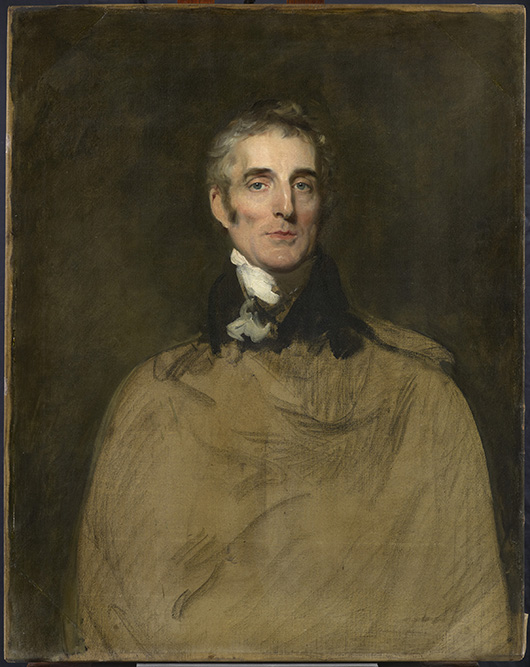LONDON – A rarely seen portrait of the Duke of Wellington goes on view at the National Portrait Gallery as part of its exhibition “Wellington: Triumphs, Politics and Passions,” opening March 12. The portrait has never been publicly displayed in the United Kingdom.
Painted by Sir Thomas Lawrence toward the end of the artist’s life, the portrait will be displayed alongside famous paintings of the Iron Duke, including those by Goya and Hoppner, in the first exhibition devoted to Wellington’s life (1769 –1852). Prior to its loan to the gallery from a private collection last year, the portrait, which is in excellent condition, had not been shown in public for any significant period of public display since it was painted.
The large oil-on-canvas portrait was commissioned a year after Wellington had become Tory Prime Minister by Sarah, Countess of Jersey, a leading political hostess and supporter of the Tories in the 1820s. At Lawrence’s death in 1830 the portrait remained unfinished. But unlike many other clients, Lady Jersey refused to have it finished by a studio assistant.
On hearing that the Duke of Wellington had fallen from power in 1830, Lady Jersey burst into tears in public. She reportedly “moved heaven and earth” against the Reform Act 1832 which Wellington had also opposed.
“While it is unfinished, the artist has captured in Wellington’s face a feeling of sensitivity appropriate in a portrait made for one of Wellington’s most devoted friends,” said Paul Cox, associate curator, National Portrait Gallery.
Painted in 1829, the year Wellington was appointed Lord Warden of the Cinque Ports and in which he fought a duel with Lord Winchilsea over the issue of Catholic emancipation, the portrait shows him in civilian dress with only his black collar and white stock visible. It was commissioned at the height of Wellington’s political career, while he was prime minister.
The painting will be seen in the exhibition alongside Goya’s portrait of Wellington started in 1812 after his entry into Madrid and later modified twice to recognize further battle honors and awards.
Taking place to mark the bicentenary year of the Battle of Waterloo, “Wellington: Triumphs, Politics and Passions” (March 12 – June 7) will explore not only the political and military career of the victor of this great battle, but also his personal life through portraits of his family and friends. Drawn from museums and private collections including that of the present Duke of Wellington, the exhibition of 59 portraits and other art works includes rarely seen loans from the family including a portrait by John Hoppner of the Duke as a youthful soldier and a daguerreotype portrait by Antoine Claudet, in the new medium of photography, taken on Wellington’s 75th birthday in 1844.
As well as tracing his professional and private life, the exhibition considers the attempts of the art world to celebrate the Duke of Wellington’s military successes. Commemorative objects on display will range from royal commissions by Europe’s foremost artists and manufacturers to more modest souvenirs aimed at the domestic market. Wellington’s eventful and often difficult political career will be illustrated by examples of the many satirical prints published in the 1820s and 1830s and the exhibition will also examine the reappraisal of Wellington’s life that took place at his death and on the occasion of his lavish state funeral.
Curated by Paul Cox, associate curator, National Portrait Gallery, with close support from Lucy Peltz, curator of 18th-century portraits, National Portrait Gallery, this biographical exhibition will use portraits and objects to explore Wellington’s military career and his sometimes controversial political and personal life.


